1,3-Bis(aminomethyl)benzene
Synonym(s):α,α′-Diamino-m-xylene;1,?3-?Benzenedimethanamine;1,3-Bis(aminomethyl)benzene;m-XDA
- CAS NO.:1477-55-0
- Empirical Formula: C8H12N2
- Molecular Weight: 136.19
- MDL number: MFCD00008119
- EINECS: 216-032-5
- SAFETY DATA SHEET (SDS)
- Update Date: 2024-12-18 14:15:30

What is 1,3-Bis(aminomethyl)benzene?
Description
m-Xylene-α,α0-diamine is a colorless liquid.Molecular weight=136.22; Specific gravity (H2O:1)=1.032 at 25℃; Boiling point = 247.2℃; Freezing/Meltingpoint =15℃; Vapor pressure = 0.03 mmHg at 25℃; Flashpoint = 117℃. Hazard Identification (based on NFPA-704M Rating System): Health 3, Flammability 0, Reactivity 0.Soluble in water.
Chemical properties
CLEAR SLIGHTLY YELLOW LIQUID
Chemical properties
m-Xylene-α,α0-diamine is a colorless liquid.
The Uses of 1,3-Bis(aminomethyl)benzene
Manufacture of polyamide fibers and resins, as a curing agent.
The Uses of 1,3-Bis(aminomethyl)benzene
m-Xylylenediamine can be used:
- As a monomer for the synthesis of poly(vinylogous urethane) vitrimers.
- As a starting material for the synthesis of carbamate-protected multisubstituted bis-guanidine.
- For the synthesis of polyamides by catalytic dehydrogenation with diols.
General Description
Colorless liquid with an amine smell. Mp: 14.1°C; bp: 273°C . Water soluble.
Reactivity Profile
1,3-Bis(aminomethyl)benzene is combustible (Flash point 139°C). Incompatible with acids, acid chlorides, acid anhydrides.
Hazard
Moderately toxic by skin contact and ingestion. Mildly toxic by inhalation. A severe skin, eye, and gastrointestinal irritant.
Safety Profile
Moderately toxic by skin contact and ingestion. Mildly toxic by inhalation. A severe skin and eye irritant. When heated to decomposition it emits toxic fumes of NOx. Used to make polyamide fibers and resins and as a curing agent.
Potential Exposure
m-Xylene-α,α0-diamine is a source of m-xylene di-isocyanate and used as an intermediate in the manufacture of epoxy and polyamide resins.
First aid
If this chemical gets into the eyes, remove anycontact lenses at once and irrigate immediately for at least30 min, occasionally lifting upper and lower lids. Seekmedical attention immediately. If this chemical contacts theskin, remove contaminated clothing and wash immediatelywith soap and water. Seek medical attention immediately. Ifthis chemical has been inhaled, remove from exposure,begin rescue breathing (using universal precautions, including resuscitation mask) if breathing has stopped and CPR ifheart action has stopped. Transfer promptly to a medicalfacility. When this chemical has been swallowed, getmedical attention. Give large quantities of water and inducevomiting. Do not make an unconscious person vomit.
storage
Color Code—White: Corrosive or Contact Hazard;Color Code—Blue: Health Hazard/Poison: Store in a securepoison location. Store separately in a corrosion-resistantlocation. Prior to working with this chemical you should betrained on its proper handling and storage. Store in tightlyclosed containers in a cool, well-ventilated area away fromoxidizers (such as perchlorates, peroxides, permanganates,chlorates, and nitrates) and strong acids (such as hydrochloride, sulfuric, and nitric). Store in tightly closed containersin a cool, well-ventilated area away from heat. Sources ofignition, such as smoking and open flames, are prohibitedwhere this chemical is used, handled, or stored in a mannerthat could create a potential fire or explosion hazard. Metalcontainers involving the transfer of 5 gallons or more ofthis chemical should be grounded and bonded. Drums mustbe equipped with self-closing valves, pressure vacuumbungs, and flame arresters. Use only nonsparking tools andequipment, especially when opening and closing containersof this chemical.
Shipping
UN 2735A mines, liquid, corrosive, n.o.s, or Polyamines, liquid, corrosive, n.o.s., Hazard class: 8; Labels: 8-Corrosive material, Technical Name Required. UN3267 Corrosive liquid, basic, organic, n.o.s., Hazard class: 8; Labels: 8-Corrosive material, Technical Name Required.
Incompatibilities
Combustible; vapors may form explosive mixture with air. Incompatible with oxidizers (chlorates, nitrates, peroxides, permanganates, perchlorates, chlorine, bromine, fluorine, etc.); contact may cause fires or explosions. Keep away from alkaline materials, strong bases, strong acids, oxoacids, and epoxides.
Properties of 1,3-Bis(aminomethyl)benzene
| Melting point: | 14°C |
| Boiling point: | 265 °C745 mm Hg(lit.) |
| Density | 1.032 g/mL at 25 °C(lit.) |
| vapor pressure | 15 mm Hg ( 145 °C) |
| refractive index | n |
| Flash point: | >230 °F |
| solubility | Chloroform (Slightly), Methanol (Slightly) |
| pka | 9.37±0.10(Predicted) |
| form | Liquid |
| color | Clear slightly yellow |
| Water Solubility | Miscible |
| BRN | 1099911 |
| CAS DataBase Reference | 1477-55-0(CAS DataBase Reference) |
| NIST Chemistry Reference | 1,3-Benzenedimethanamine(1477-55-0) |
| EPA Substance Registry System | m-Xylylenediamine (1477-55-0) |
Safety information for 1,3-Bis(aminomethyl)benzene
| Signal word | Danger |
| Pictogram(s) |
 Corrosion Corrosives GHS05  Exclamation Mark Irritant GHS07 |
| GHS Hazard Statements |
H314:Skin corrosion/irritation H317:Sensitisation, Skin H412:Hazardous to the aquatic environment, long-term hazard |
| Precautionary Statement Codes |
P273:Avoid release to the environment. P280:Wear protective gloves/protective clothing/eye protection/face protection. P301+P312:IF SWALLOWED: call a POISON CENTER or doctor/physician IF you feel unwell. P303+P361+P353:IF ON SKIN (or hair): Remove/Take off Immediately all contaminated clothing. Rinse SKIN with water/shower. P305+P351+P338:IF IN EYES: Rinse cautiously with water for several minutes. Remove contact lenses, if present and easy to do. Continuerinsing. |
Computed Descriptors for 1,3-Bis(aminomethyl)benzene
New Products
(S)-3-Aminobutanenitrile hydrochloride 4-Methylphenylacetic acid N-Boc-D-alaninol N-BOC-D/L-ALANINOL Tert-butyl bis(2-chloroethyl)carbamate 3-Morpholino-1-(4-nitrophenyl)-5,6-dihydropyridin- 2(1H)-one Furan-2,5-Dicarboxylic Acid Tropic acid 1-Bromo-3,5-Di-Tert-Butylbenzene S-2-CHLORO PROPIONIC ACID ETHYL ISOCYANOACETATE 2-Bromo-1,3-Bis(Dimethylamino)Trimethinium Hexafluorophosphate 4-IODO BENZOIC ACID 3-NITRO-2-METHYL ANILINE 1-(2,4-DICHLOROPHENYL) ETHANAMINE (2-Hydroxyphenyl)acetonitrile 4-Bromopyrazole 2-(Cyanocyclohexyl)acetic acid 4-methoxy-3,5-dinitropyridine 1-(4-(aminomethyl)benzyl)urea hydrochloride 2-aminopropyl benzoate hydrochloride diethyl 2-(2-((tertbutoxycarbonyl)amino) ethyl)malonate tert-butyl 4- (ureidomethyl)benzylcarbamate Ethyl-2-chloro((4-methoxyphenyl)hydrazono)acetateRelated products of tetrahydrofuran
![O1-(2-CHLOROBENZOYL)-3-[(4,5-DICHLORO-1H-IMIDAZOL-1-YL)METHYL]BENZENE-1-CARBOHYDROXIMAMIDE](https://img.chemicalbook.in/StructureFile/ChemBookStructure2/GIF/CB5328822.gif)

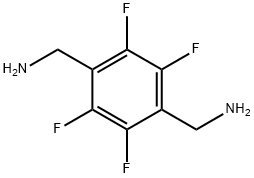
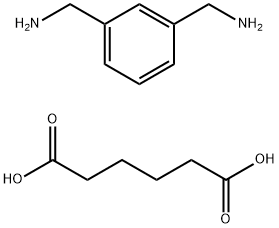
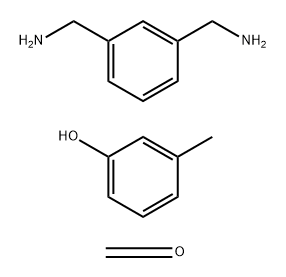
![Benzenedimethanamine, polymer with 2,2'-[(methyl-ethylidene)bis(4,1-phenyleneoxy)] bis(3-methyloxirane)](https://img.chemicalbook.in/)
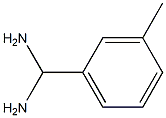
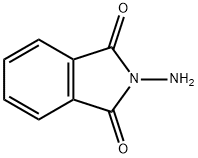
You may like
-
 m-Xylylenediamine 98.00% CAS 1477-55-0View Details
m-Xylylenediamine 98.00% CAS 1477-55-0View Details
1477-55-0 -
 m-Xylylenediamine CAS 1477-55-0View Details
m-Xylylenediamine CAS 1477-55-0View Details
1477-55-0 -
 M-Xylylenediamine 95% CAS 1477-55-0View Details
M-Xylylenediamine 95% CAS 1477-55-0View Details
1477-55-0 -
 M-Xylenediamine CASView Details
M-Xylenediamine CASView Details -
 m-Xylylenediamine CAS 1477-55-0View Details
m-Xylylenediamine CAS 1477-55-0View Details
1477-55-0 -
 1975-50-4 98%View Details
1975-50-4 98%View Details
1975-50-4 -
 14714-50-2 (2-Hydroxyphenyl)acetonitrile 98+View Details
14714-50-2 (2-Hydroxyphenyl)acetonitrile 98+View Details
14714-50-2 -
 118753-70-1 98+View Details
118753-70-1 98+View Details
118753-70-1